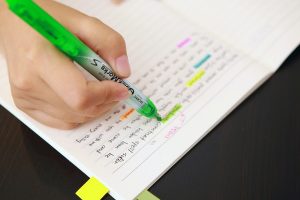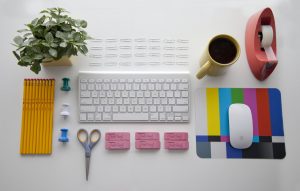
Note-taking has been, and will continue to be, one of the important skills that every student should be able to master. Perhaps you might think that note-taking is as simple as it is, but not many are aware that note-taking is also a form of art.
Note-taking is one of the most effective ways to learn. It beats highlighting and underlining. Fun fact: Highlighting could be a hindrance to learning as it draws attention to individual facts, thus hampering the process of making connections and drawing inferences.

When taking notes, be sure that you are not just copying off the textbook. If you do so, you are no different from a copy-writing machine. Your brain would be more focused on copying the words over than to fully comprehend whatever you may be copying. Don’t bother writing down what you already know as it is likely to stay with you. Leave more room in your brain to delve deeper into what you don’t.
Take notes in class and lectures

Students should cultivate the habit of taking notes in class as it would help to improve recall and understanding of what you are learning. While you are at it, it serves as a signal to tell you if you are paying attention and actively listening to what the teacher is saying. Having to write something out requires you to think about what you are writing first so that you can string your thoughts and ideas into coherent and logical sentences. At the end of the day, notes that you have taken would serve as quality review material for after class, and whenever you are doing your revision.
Point Form
As your teacher starts to spew millions of words like a bullet train, you mind find yourself having difficulties to catch up. Actually, you don’t have to copy everything out word-for-word. Being able to take down the key points in point form would be good enough, as long as the few words that you put down on the paper can help to encapsulate the idea that the teacher was trying to bring across. While this also means that you may have to consolidate your learning once more when you get home, this gives you an opportunity to review your work. You may also want to devise your own abbreviations (short forms), symbols and arrows to make note-taking more efficient.
Write In Your Own Words
Unless there are important phrases, quotes or keywords that need to be used in answering questions to score the full marks, it is advisable that you take your notes in your own words, based on how you have understood whatever you have learnt. At times, teachers may express their ideas in the most complicated manner ever. But if you are able to write it in your own words, chances are that you could be able to remember it better in the long run.
Clear & Organised

Your notes need to be organised in a manner which is appealing to yourself so that you would want to read them again. Clearly, you wouldn’t want to read a whole chunk of revolting illegible words. Everyone would then point to neat handwriting. Even if you do not have the neatest handwriting around, there are many other ways to make your own notes clear and concise. You could start of with categorising the important concept or add in cool graphics to make your notes more aesthetically pleasing. Sure, it might seem to be really troublesome at first, but as you start to get used to your own way of note-taking, you start to subconsciously take notes in your very own style! Taking notes would perhaps be a really fun thing to do then.
Handwriting or Typing?
Although typing may be a more efficient method to record down the lecturer’s words, we don’t exactly have the time to analyse what is being said before everything is typed in.
Even though our centre provides comprehensive notes for our students, we also encourage them to take their own notes during lessons. This serves as an indicator to know if our students can follow the pace of the lesson.
Review
Note-taking does not just stop there. Set aside some time to read through, summarise or rearrange your notes in a way that makes sense to you. Sometimes, you would have copied the same thing twice or even multiple times, which means that you can technically condense your notes so that everything would become clearer for you as you start to take more notes.
Perhaps you may wonder what would be considered as “good notes”. Simply put, good notes are notes that allow you to revise all the relevant information quickly and accurately. If you are curious on what good notes are like, sign up for a FREE trial class now , and check out the notes that we provide our students with!

